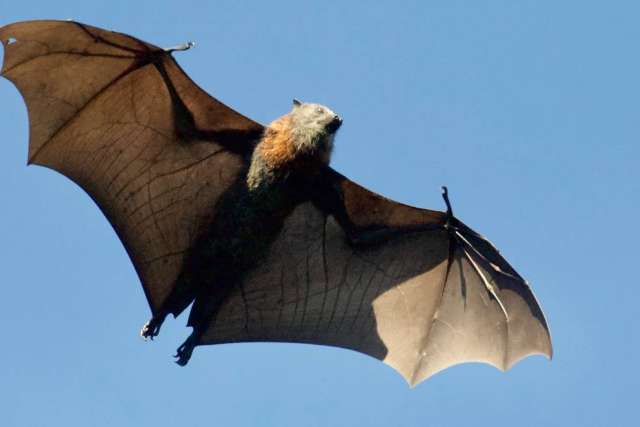Dear Doctors: My brother woke up to find a bat on his bed. He captured it in a bucket and took it to animal control, and it turned out to be rabid. Even though he didn’t touch the bat and his doctor couldn’t find any bite marks, he still had to get rabies shots. Why would that be?
Dear Reader: Bats are an important part of our ecosystem. They pollinate plants, disperse seeds, control bug populations and are a food source for hawks, falcons and owls. Unfortunately, they are also among the most frequently reported rabid animal in the United States, and they are the leading cause of rabies deaths in this country.
Rabies is a viral disease that affects the central nervous system. It is almost always fatal. The most common form of transmission is through direct contact with the saliva of a rabid animal. This can occur through skin broken by bite or a scratch, or secondhand contact with infected saliva via the mucous membranes in the victim’s eyes, nose or mouth.
Because bats have tiny teeth and claws, you can be scratched or bitten and not feel or see the point of entry. That makes it important to take close encounters with these flying mammals very seriously. Your brother did the right thing each step of the way. He captured the bat without contact and took it to his local health authorities for testing. And while it may seem an extreme precaution, he was wise to agree to the series of injections that are used in cases of rabies exposure.
Once someone has been infected with the rabies virus, there is a time lag before the visible signs of disease begin. This is because the virus first has to reach the brain. This incubation period can range from weeks to months after initial infection. The duration depends on the specific type of rabies virus involved, how far from the brain the exposure occurs and any immunity someone may have.

The series of life-saving shots that your brother received is known as post-exposure prophylaxis, or PEP. They begin with a dose of human rabies immune globulin and also the rabies vaccine, administered on the day of exposure. Follow-up rabies vaccine is given again on the third, seventh and 14th days following exposure. The CDC recommends PEP to anyone with close contact or exposure to a rabid bat, whether or not a bite is known to have occurred.
(Send your questions to askthedoctors@mednet.ucla.edu, or write: Ask the Doctors, c/o UCLA Health Sciences Media Relations, 10960 Wilshire Blvd., Suite 1955, Los Angeles, CA, 90024. Owing to the volume of mail, personal replies cannot be provided.)





